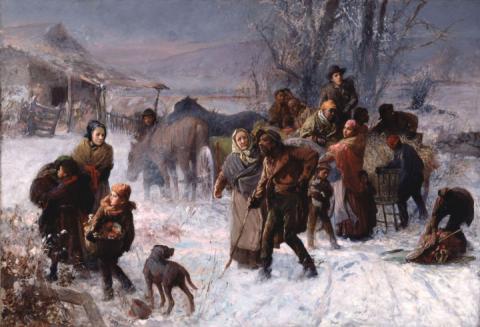Ripley was a town whose residents hated slavery. Maybe Tice Davids, a Kentucky runaway slave, knew that as he swam for his life across the Ohio River.
His white master wasn’t far behind. With his eyes fixed on his “property,” the owner furiously rowed across the river which separated free states (like Ohio) from slave states (like Kentucky). What happened next gave the “Underground Railroad” its name.
How did people like Tice Davids get to Kentucky in the first place? They were kidnapped from their African homes, sent to “the new world” amidst appalling conditions on slave ships, sold at auction to the highest bidder and then “worked to the bone” for no wages. They, and their families, were considered “the property” of plantation owners throughout the American South and the Caribbean Islands.
To escape, slaves sometimes used the underground railroad. What was it? How did it work? Were there actual routes? Who were some of its principal conductors? What happened to slaves who were caught?
In this story about the underground railroad:
- Visit Ripley—the town were Tice Davids “disappeared”—and investigate what the “underground railroad” really was;
- See what life was like for slaves and examine pictures of slave auctions where families were often split apart;
- Virtually visit places where slaves lived and assess photos from America’s national archives;
- Inspect some of the "safe houses" where fleeing people hid from their would-be captors; and
- Meet some of the individuals who helped escaping slaves to "reach freedom."
Learning about the Underground Railroad comes alive at AwesomeStories. Depending on the teacher’s preference, students can:
- “See” the story unfolding before their eyes in class (then view it, with their parents, at home);
- “Hear” the story (via a provided dramatized narration);
- “Think about” the story (with essential questions, such as “What makes a person willing to risk capture in order to help others?”); and
- “Study” the story (with lots of pictures and videos).
Using an integrated approach—combining visual arts, historical materials and language arts—students investigate the Underground Railroad in personalized-learning fashion with words and concepts suitable for a range of achievement levels. Students can then create their own stories, using the AwesomeStories’ archive of primary sources, to produce their own related stories to share with their class, their family and (if accepted for publication) … the whole online world!
Media Credits
"The Underground Railroad," an 1893 painting by Charles T. Webber, depicts the "underground railroad" in action. Three people from Cincinnati—Levi Coffin, Catharine Coffin and Hannah Haydock—help slaves who have escaped. It is believed the setting for this painting is the Coffin farm in Cincinnati. Image online, courtesy Wikimedia Commons.





